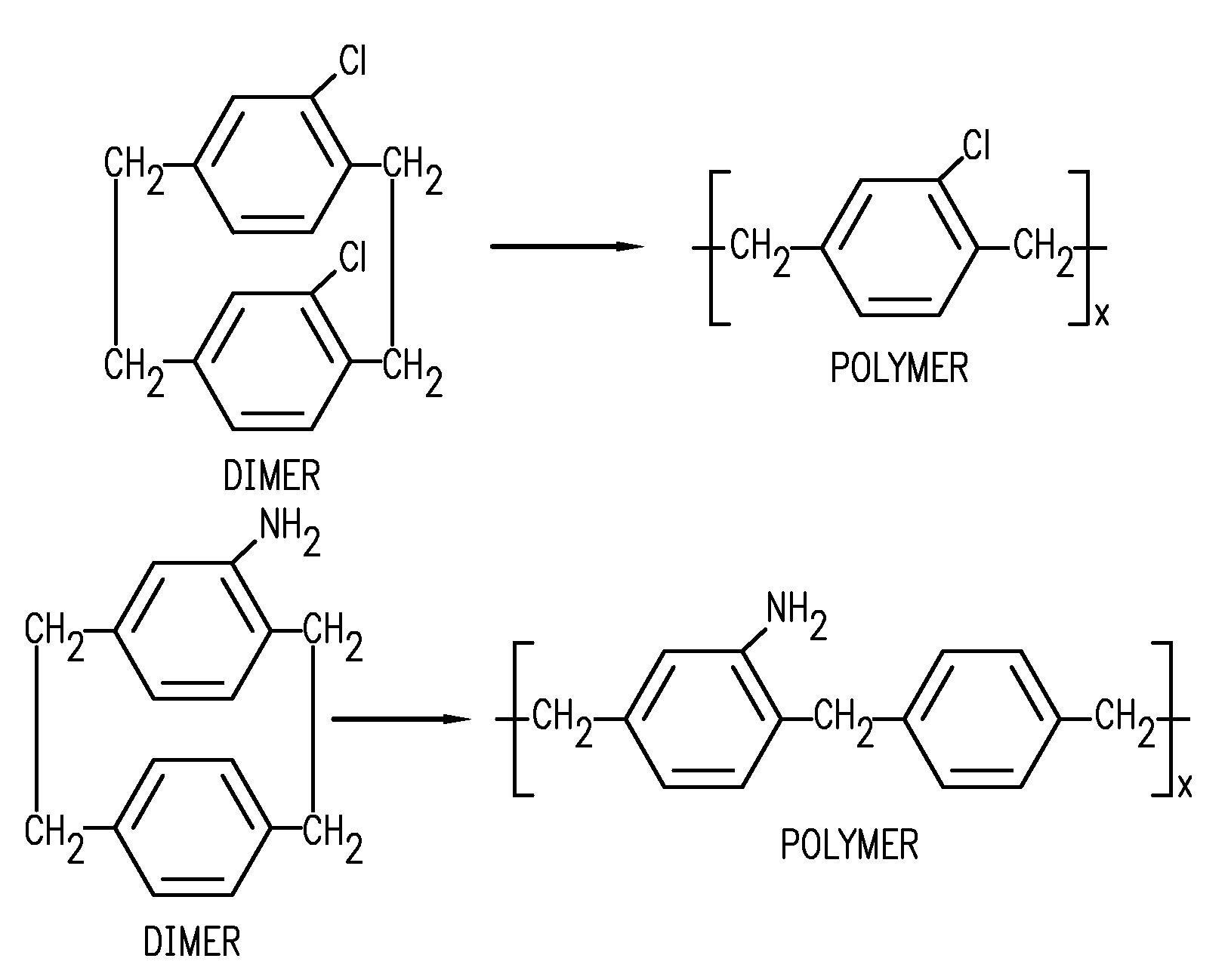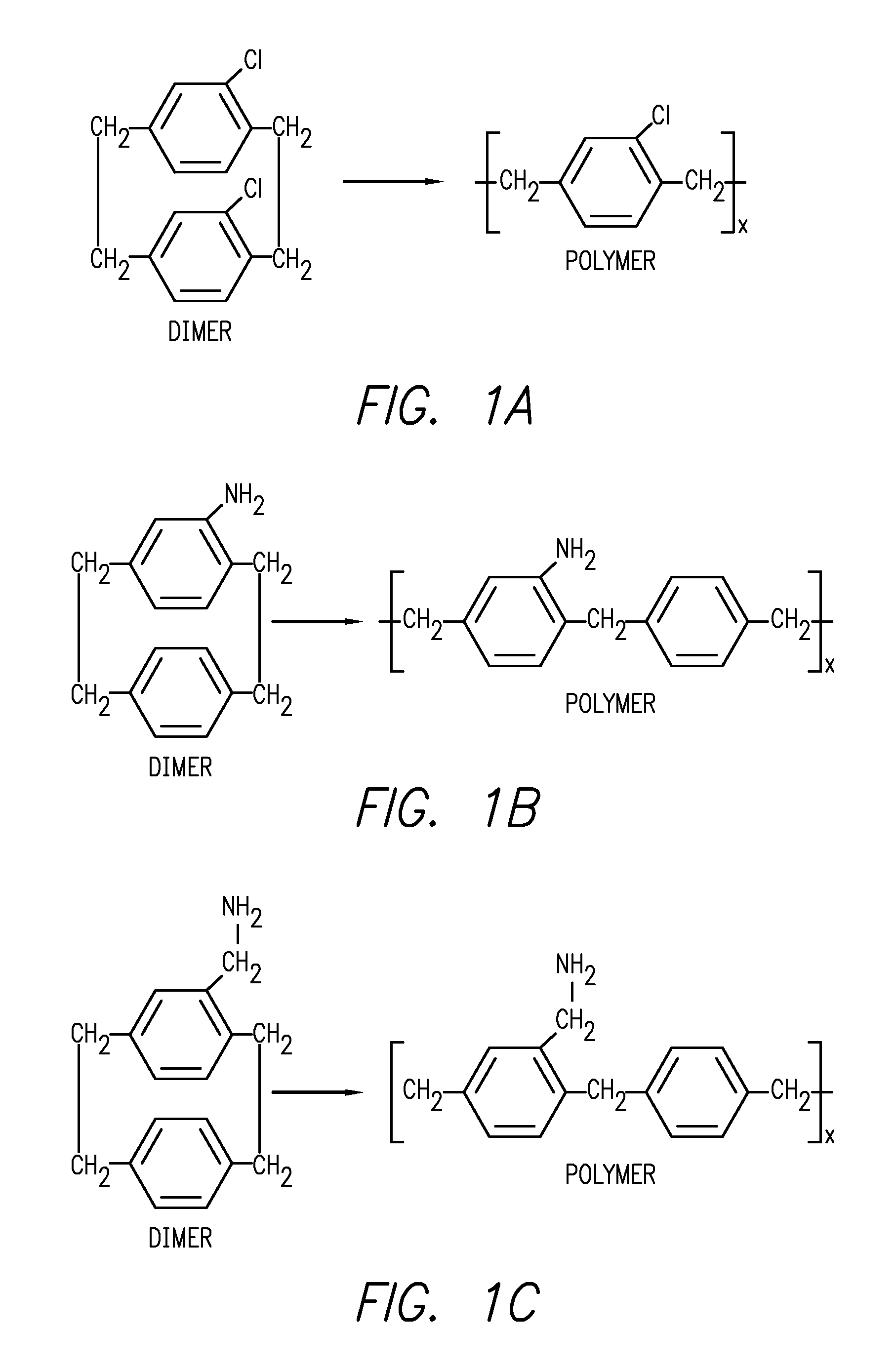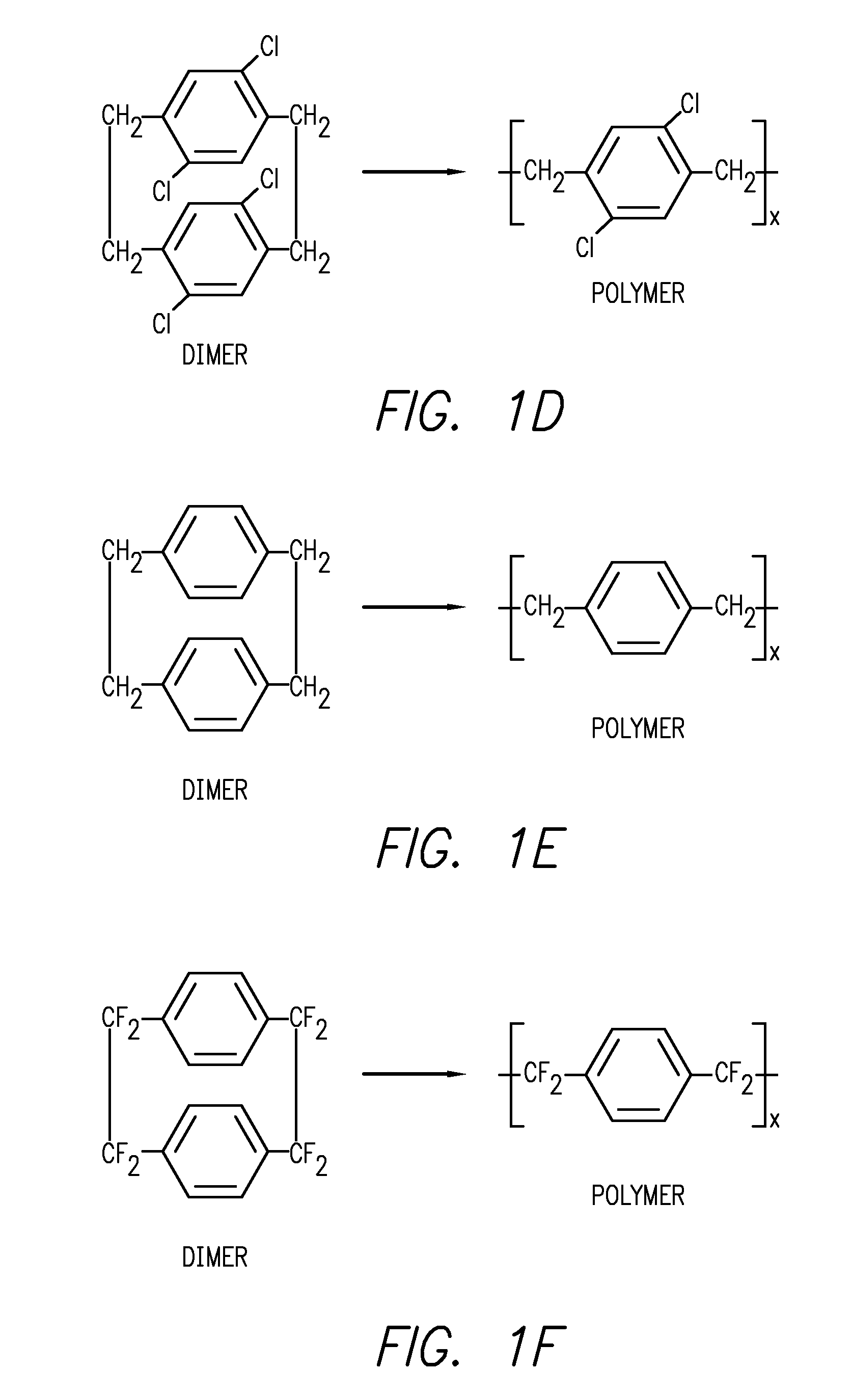Para-xylylene based microfilm elution devices
a microfilm elution and para-xylene technology, applied in the direction of prosthesis, bandages, coatings, etc., can solve the problems of toxic and/or adverse side effects of drugs, high therapeutic cost, systemic delivery is deleterious, etc., to resist delamination, resist tearing, and controllable and accurate fashion
- Summary
- Abstract
- Description
- Claims
- Application Information
AI Technical Summary
Benefits of technology
Problems solved by technology
Method used
Image
Examples
example 1
[0155]Referring to FIG. 4, Example 1 is an experiment to compare therapeutic spreading with respect to an unoxidized parylene layer and an oxidized parylene layer. The therapeutic analyte was Doxorubicin-HCl. Doxorubicin-HCl is the salt version of the anti-cancer chemotherapeutic Doxorubicin: (8S,10S)-8-acetyl-10-[(2S,4S,5S,6S)-4-amino-5-hydroxy-6-methyl-oxan-2-yl]oxy-6,8,11,14-tetrahydroxy-1-methoxy-9,10-dihydro-7H-tetracene-5,12-dione, having four fused six member rings of which two are unsaturated and one is a dione and a pendant sugar group The Doxorubicin-HCl has a red color and is easily visualized with no additional modification.
[0156]Therapeutic addition to the parylene layer was accomplished via desiccation of 25 μl (microliters) of a 2 mg / ml (milligrams per milliliter) solution (50 μg (micrograms) total) Doxorubicin-HCl (Alexis Biochemistry, San Diego, Calif.) under a laminar flow hood.
[0157]FIG. 4 shows for two replicates a clear variation in therapeutic spreading. The st...
example 2
[0158]Referring to FIG. 5, Example 2 is an Atomic Force Microscopy (AFM) analysis of a para-xylylene polymer layer on a glass slide. In FIG. 5A, pertains to regular paralyene C and FIG. 5B pertains to oxidatively functionalized parylene C. Plotted along the x-axis is a distance in micrometers from a left margin of the layer. Plotted along the y axis is the up and down movement of the probe in picometers. The respective plots illustrate a more uniform layer with the oxidatively functionalized parylene C. The data indicates that the integrity of a parylene layer that is oxidized is about the same as that for a like thickness regular parylene layer. That is, a concern is alleviated that oxidation could result in gross morphological changes to the parylene layer.
example 3
[0159]Referring to FIGS. 6A-F, Example 3 is an experiment to test the effect on drug elution of oxidizing parylene barrier microfilm relative to a device with a regular parylene barrier microfilm that is not oxidized. The analyte therapeutic was dexamethasone. Dexamethasone is a glucocorticosteroid. It has a trihydroxypregn-4-ene-3,20-dione as an unsaturated polycyclic core with unsaturated lower chain alkyl, fluoro and methyl substituents. Fluorescein was linked to the dexamethasone to monitor release.
[0160]Therapeutic addition to a base parylene layer of the device was accomplished via desiccation of 25 μl (microliters) of a 1.25 mg / ml (milligrams per milliliter) solution (31.25 mg (micrograms total) of Dexamethasone-fluorescein (source, Invitrogen Corporation, Carlsbad, Calif.) under a laminar flow hood. A first series of single layer regular parylene microfilms (not oxidized) having weights as a surrogate indicator of thickness of 0.2, 0.4 and 0.6 grams were deposited over dried...
PUM
| Property | Measurement | Unit |
|---|---|---|
| thickness | aaaaa | aaaaa |
| thickness | aaaaa | aaaaa |
| thickness | aaaaa | aaaaa |
Abstract
Description
Claims
Application Information
 Login to View More
Login to View More - R&D
- Intellectual Property
- Life Sciences
- Materials
- Tech Scout
- Unparalleled Data Quality
- Higher Quality Content
- 60% Fewer Hallucinations
Browse by: Latest US Patents, China's latest patents, Technical Efficacy Thesaurus, Application Domain, Technology Topic, Popular Technical Reports.
© 2025 PatSnap. All rights reserved.Legal|Privacy policy|Modern Slavery Act Transparency Statement|Sitemap|About US| Contact US: help@patsnap.com



